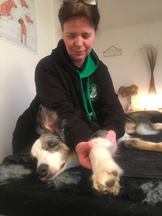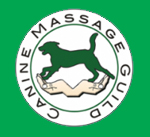Best Practice
Code Of Conduct & Professional Ethics for the Canine Massage Guild
THE THERAPIST
1. The Therapist has undertaken and successfully passed the Clinical Canine Massage Practitioner Program.
2. The Therapist is committed to providing the highest standard of Canine Massage therapy and treatment by using 4 disciplines of massage; Swedish, Sports, Deep Tissue & Myofascial Release
3. Holds relevant Public Liability and Professional indemnity Insurance and will provide the Canine Massage Guild with a copy of these insurance documents annually
CONTINUED PROFESSIONAL DEVELOPMENT
4. Demonstrates a Professional Commitment to Excellence by continued education and training, specifically a minimum of 25 hours CPD per year
5. The member will not run workshops until they have received the required guild approved training.
METHODOLOGY
6. Demonstrates professionalism by seeking Veterinary Consent to comply with the Veterinary Surgeons Act 1966 and the Veterinary Surgery (Exemptions) Order 2015
7. Understands that the first rule of ‘Therapeutic Canine Massage’ is firstly do no harm
8. A Guild Member will always apply a full body massage to address not only the area of concern but areas of over compensation to ensure that the body is balanced.
9. Uses Advanced Palpation Skills to find and locate specific areas of soft tissue injury and issue
10. Understands Local & Absolute contraindications
11. Understands and acknowledges their Limitations
12. Understands the importance of veterinary referral e.g.: should a neurological/orthopaedic issue be suspected referral back to vet in charge of case for diagnosis
13. The use of any mechanical device (ie lasers/ultrasound) is prohibited unless the member has relevant qualification to use these through other training eg Physiotherapy training
14. The Member must not diagnose a medical condition/illness but may offer observations of symptoms to allow the client to understand why they have been recommended to return to their veterinary surgeon.
15. Provides vets with a full report of findings and efficient communication when pertinent
16. Acknowledges the limits of their scope and understands when referral to another complimentary therapist eg: acupuncture may be beneficial
CONTRACTUAL ARRANGEMENTS WITH THE CLIENT
17. Will only see a client initially for a maximum of 3 treatments, if necessary, preferably spread over 3 – 5 weeks . Within this time, the treatment should have provided some sort of tangible results. The exception to this would be a client presented with Paresis where a further 1 or 2 treatments may be necessary. This would be at the discretion of the client.
18. Only provides treatment to a client where the treatment is perceived to be beneficial
19. A member will not offer a block offer of treatment, each treatment of a client is based on clinical reasoning
20. Will perform a Risk Assessment on each canine client before treatment to safeguard the well being of dog, practitioner and owner. Should a dog be in pain or show aggressive/reactive tendencies it is the policy of the therapist to use an appropriate muzzle in line with standardised Health & Safety Practice for working with domestic animals
21. Promotes/advertises/markets services tastefully and honestly. Therapists understand they must not use the words or make claims to ‘Cure’, or ‘Heal’.
PRIVACY and PROFESSIONAL RELATIONSHIPS
22. Acknowledges the confidential nature of the professional relationship with clients and respects each client’s privacy.
23. Adheres to the Data Protection Act 1984 to safeguard client details
24. Therapists should discuss with clients what contact the clients have had with other helping professionals. Therapists need to consider where the service they may offer could conflict with the help offered by other professionals. Permission by the client should be sort to contact other professionals where appropriate.
25. In exceptional circumstances, there could be sufficient evidence to raise a serious concern regarding safety or the interests of the client or other colleagues, or others who may be threatened by a client’s behaviour, (Human or canine). The member may inform appropriate persons without consent (although it is preferred that consent is first obtained.) The Client should be informed of this action, e.g where a dog is particularly aggressive and needs to be referred to another professional.
26. Members shall respect the views and independence of others and shall not publically denigrate their conduct or opinions.
27. Does not discriminate or hold prejudice to clients or colleagues
28. The member should not behave in a way in their professional activities, which undermine public confidence in either their role as a therapist or in the work of other therapists.
29. Where a member perceives a colleague acting in breach of this code of Ethics, the member has an obligation to raise the matter with the person and/or notify the appropriate person.
COMPLAINTS PROCEDURE
30. Members should be familiar with the Guilds complaints procedure. If you are a member of the public who would like to make an Official Complaint about a Guild Member you can do so by reading the steps on the Canine Massage Guild website.



